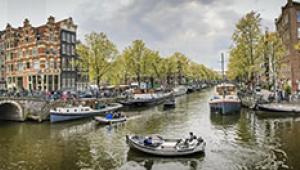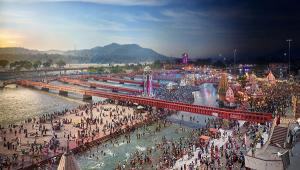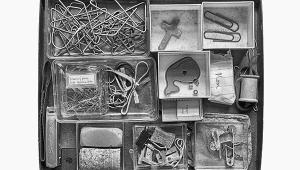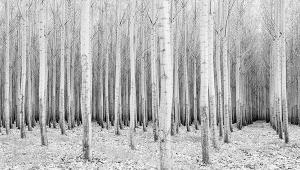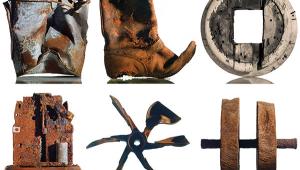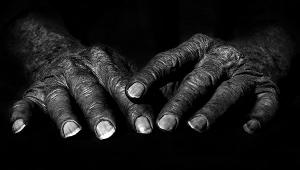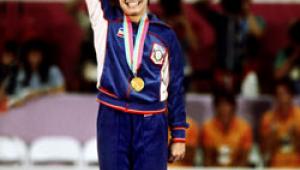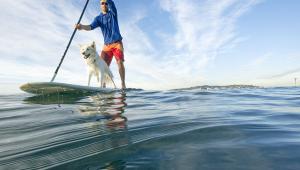Shooting Stars: He Went to Photograph a Meteor Shower But Found a Few Surprises
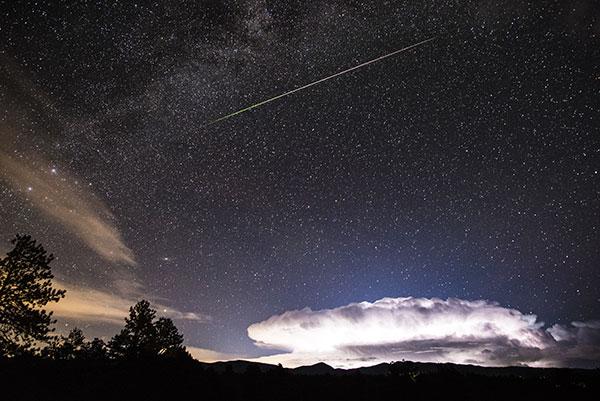
The night promised pictures: there’d be a clear sky and the peak period of the annual Perseid meteor shower.
There’d be a lot more, but photographer Christoph Stopka and his wife, Cathy, didn’t know when they set up the camera in their backyard that the sky show would far exceed their expectations.
The Stopkas live in Westcliffe, Colorado, in a house 9,000 feet above sea level. Their view of the night sky is spectacular and unspoiled by light pollution because there is none; Westcliffe is a designated International Dark Sky Community.
“People come from around the world to photograph the night sky over Westcliffe,” Stopka says. “There are no streetlights allowed here, and residents either don’t have outside lights or have covers over them to limit their visibility.”
Stopka adds that area is also known for the “unbelievable weather patterns” its topography—two mountain ranges and a valley—creates. “In 15 minutes or less we’ll have thunderstorms build up out of nowhere,” he says, and sure enough, in the midst of the meteor shower that night, one of those storms added to his subject matter a cloud illuminated from the inside by multiple lightning strikes.
And then, in the last five seconds of a 25-second exposure, a meteor came streaking across the sky, changing color as it went. “Standing there, we were completely in awe, speechless,” Stopka says. “The lit cloud, the stars, the Milky Way, the meteor—we’d never seen anything like it.”
The 25-second exposure caught it all. “I take so many night photography images I totally have a feeling for the situation, and I knew it would be a good 20- or 25-second exposure, and 25 is the outside to keep the stars sharp in the sky.”
He also knew from experience that his 20mm lens was best for the sky coverage he needed. “The meteor shower would be all over the place, and I needed more than the 24mm I usually use for night sky images. The tricky part was exposure for the lightning storm—the cloud was so bright.” He estimates that during the exposure there were 15 lightning flashes—“every two seconds, lighting up the inside of the cloud. It was like firing a flash unit inside a pillowcase.”
There was some luck involved, as he had no way of knowing if a meteor would cross during the exposure.
“It was, Okay, I’ll take a chance, I’ll go with 25 seconds and maybe I’ll get a meteor. I got a few before this shot, but tiny, not really special. When this came, we literally screamed, but we didn’t know right away that we’d gotten it. Later when we saw it, and saw that it had changed color as it went over, green to orange to red, we screamed again. We knew it would be a moment we’d remember for all of our lives.”
If you visit Westcliffe to photograph the night sky, what you need to remember is that there are no streetlights. Bring a flashlight. A hooded one.
A selection of Christoph Stopka’s outdoor and nature photography, which includes extraordinary images of the night sky, is featured at christophstopka.com.
Tech Talk: The photograph was made with a Nikon D810 and an AF-S Nikkor 20mm f/1.8G ED lens; camera settings were 25 seconds at f/3.2, ISO 2500, manual exposure, and Matrix metering.
